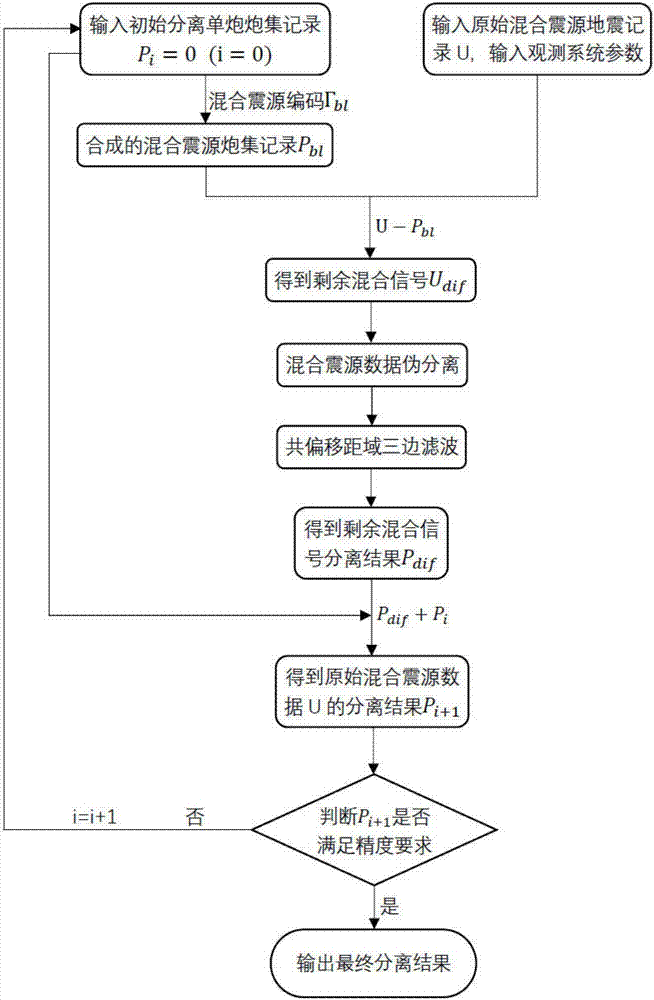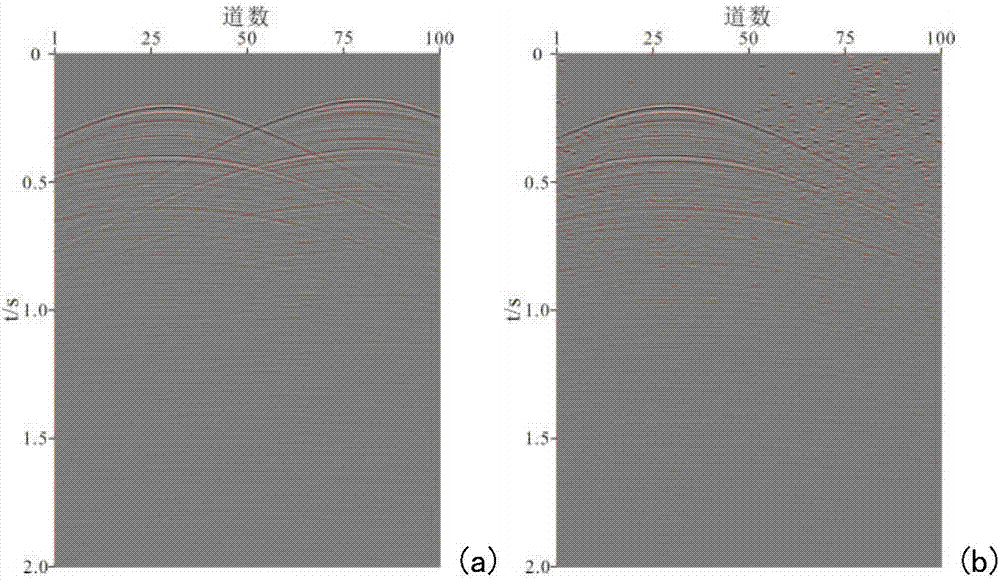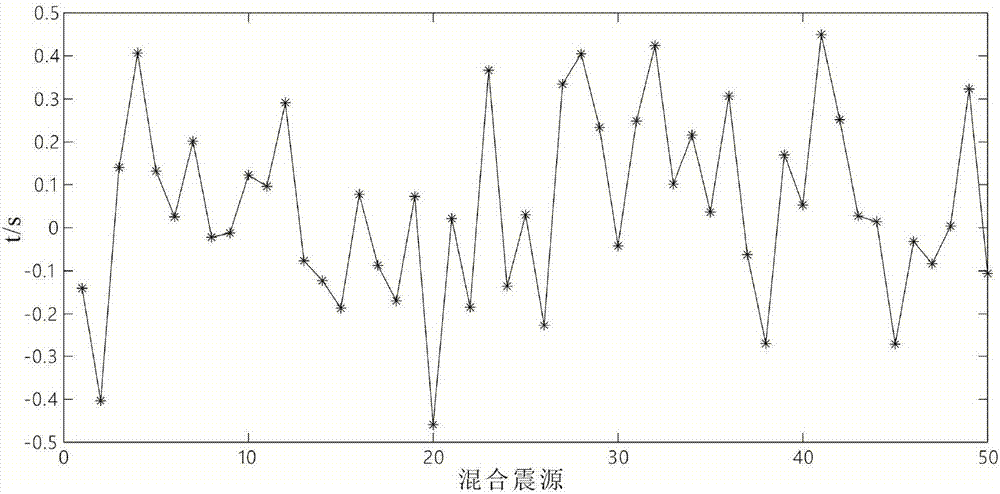Trilateral filtering-based blended source data separation method
A hybrid source, trilateral filtering technology, applied in seismology, seismic signal processing, instruments, etc., can solve the problem of not being able to remove mixed noise well, not getting separation results with high signal-to-noise ratio, etc., and achieve a good boundary. Detail information, good retention of effective signals, and the effect of improving acquisition efficiency
- Summary
- Abstract
- Description
- Claims
- Application Information
AI Technical Summary
Problems solved by technology
Method used
Image
Examples
specific Embodiment approach
[0069] (1) FFT transformation is performed on the separated single-shot shot set record;
[0070] (2) The hybrid seismic source corresponding to each frequency ω is recorded as P blω :
[0071] P blω =P iω Γ bl
[0072] Γ bl =e- iωt
[0073] (3) After calculating all the frequencies, convert the mixed source records from the frequency domain to the time domain through IFFT transformation to obtain P bl .
[0074] where ω is the frequency, and t is the delay time of a single shot in the hybrid source;
[0075] d. Computing the actual collected seismic data U and the hybrid source record P synthesized by the separated single-shot records bl The difference between, that is, the remaining mixed signal U dif =U-P bl ;
[0076] e. Coding Γ by mixing sources in the frequency domain bl to U dif Perform pseudo-separation to obtain the single-shot seismic data P′ after pseudo-separation:
[0077]
[0078] Where H represents conjugate transposition, and the pseudo-sepa...
Embodiment 1
[0093] Due to the limitation of hardware equipment, we selected a set of measured single-shot data (containing 100 seismic sources and 100 detectors) in a certain sea area to verify the present invention. We use this set of single-shot data to simulate a set of two-shot mixed source data through step c.
[0094] Simulate mixed source data parameters
[0095] The number of mixed sources is 50, and the number of single shots in each mixed source is 2. The first source and the 51st source form the first mixed source, and the second source and the 52nd source form the second mixed source. source, and so on, the 50th source and the 100th source form the 50th hybrid source. The number of detectors is 100, the total sampling time is 2s, and the sampling rate is 0.002s.
[0096] Based on the trilateral filtering hybrid source data separation parameters are as follows:
[0097] Due to σ I , σ J The smaller the value, the better the mixed noise suppression effect. Since the noise i...
Embodiment 2
[0104] The actual mixed data collection method at sea is full array collection, the length of the geophone line is 10km, the distance between two adjacent geophones is 25m, a total of 400 geophones, the length of the shot line is 8km, and the horizontal distance between two adjacent shot points is 25m, a total of 320 Shot point, two source ships are distributed on both sides of the receiver line, the vertical distances from the receiver line are 100m and 900m respectively, the starting positions of the two source ships are respectively the first shot point and the 161st shot point, and the 320-shot point direction navigation. The sampling time of the geophone is 6s, the sampling interval is 0.002s, and the random delay range is 0.5s.
[0105] Trilateral filtering separation parameters We choose the separation parameters of embodiment 1, the separation results are shown in Figure 7 b and Figure 7 c, it can be seen that the mixed noise is obviously suppressed, Figure 8 The...
PUM
 Login to View More
Login to View More Abstract
Description
Claims
Application Information
 Login to View More
Login to View More - R&D
- Intellectual Property
- Life Sciences
- Materials
- Tech Scout
- Unparalleled Data Quality
- Higher Quality Content
- 60% Fewer Hallucinations
Browse by: Latest US Patents, China's latest patents, Technical Efficacy Thesaurus, Application Domain, Technology Topic, Popular Technical Reports.
© 2025 PatSnap. All rights reserved.Legal|Privacy policy|Modern Slavery Act Transparency Statement|Sitemap|About US| Contact US: help@patsnap.com



